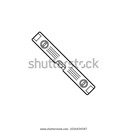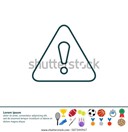Site set-out procedures
To source, read, and follow site set-out procedures, you must also be familiar with the established site set-out procedures.
A carelessly planned building will be challenging to build, costly to maintain and potentially unsafe. So, when setting out, it is important to take extra care.
For setting out, there are three main steps:
|
01 |
02 |
03 |
|
The building's orientation on the site
|
Marking a clear outline on the ground of the base of the building
|
Placing 'batter boards' across the outline of the base
|
Levelling devices
Levelling devices are the various instruments used for levelling in surveying. There are different sorts of levels. The method of measuring vertical distances in surveying is named levelling. To perform levelling, you must focus on reading about levelling devices appropriate to the construction site. Nowadays, technology makes surveying instruments easier to use.
Errors in measured distances
There are generally three sorts of errors in measuring distances:
|
Instrumental |
Operator
|
Environmental |
|
Instrument errors may occur due to one or more of the following:
|
Operator errors may occur due to one or more of the following:
|
Environmental errors occur due to external conditions affecting measuring devices. This could include:
|
Minimising errors
The following are methods that surveyors can employ to minimise errors in their measurements:
- Equalise the lengths of the backsight and foresight distances to eliminate residual collimation error of an instrument.
- Fitting a staff bubble to the staff or by swaying the staff backwards and forwards in the direction of the level until a minimum reading is obtained eliminates errors caused by not holding the staff vertically.
- Reducing the length of sight so that the readings are easily defined minimises errors in reading the staff.
- Setting the staff on firm ground, pushing the tripod legs well into the ground, and avoiding excessive movement of the instrument eliminates the error caused by an unstable instrument.
- Keeping readings at least one metre above the ground reduces the error due to refraction caused by warm air.
- Bringing the crosshairs into sharp focus using the eyepiece-focussing screw eliminates parallax errors.
Gradient calculator https://www.omnicalculator.com/construction/elevation-grade
Site Surveying and Set Out details at https://www.boeingconsult.com/
Dictionary/Glossary from AS and ABCB https://www.constructiondictionary.com.au/search



